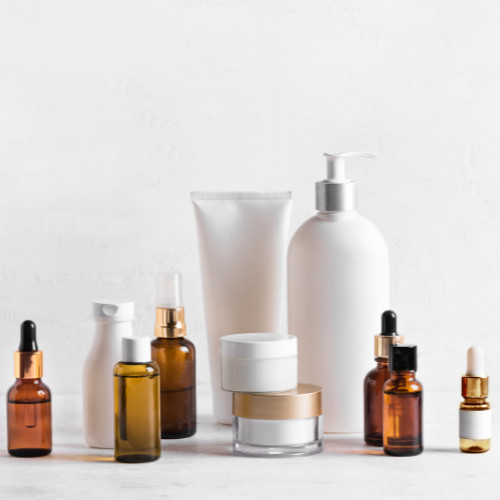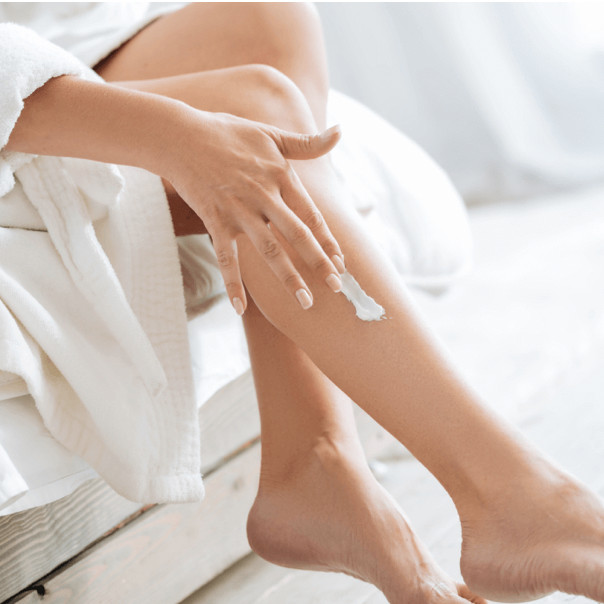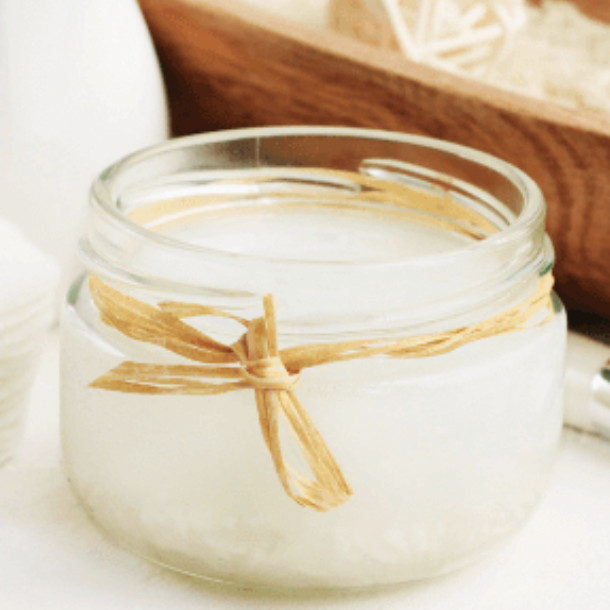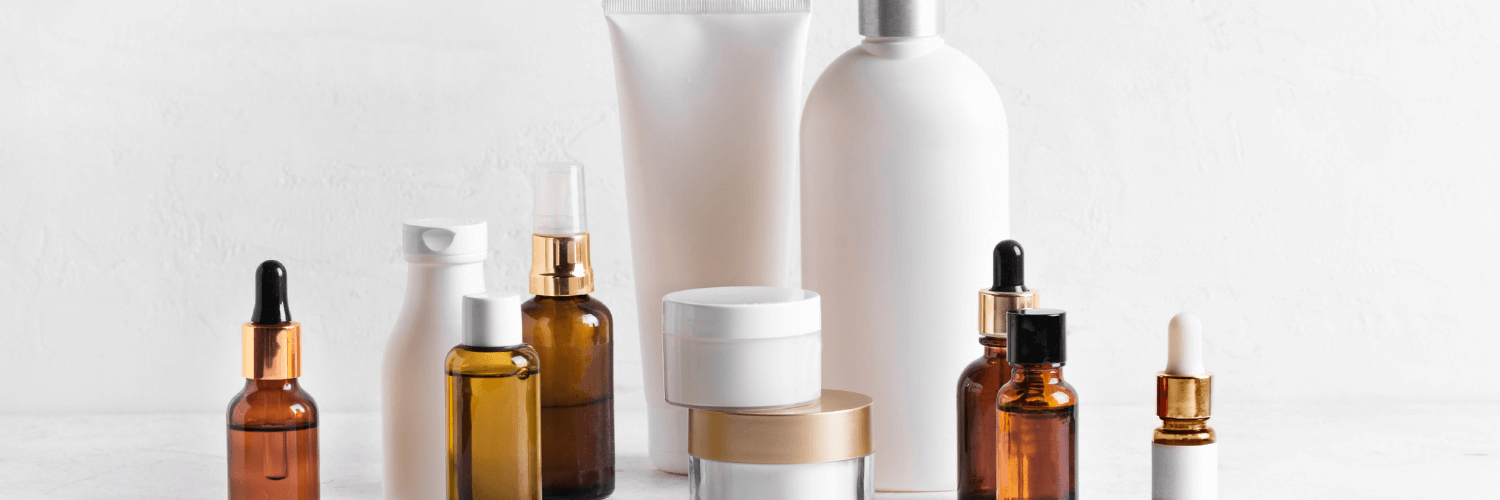
Taking care of your skin is more than just a beauty ritual; it's a form of self-care and a way to maintain the health of your largest organ. Establishing a daily skin care routine is key to maintaining healthy, glowing skin.
It can be daunting to know which product to use when and in what order. Here is a simple step-by-step routine to follow daily...
Step 1: Cleansing
The first step in any skin care routine is cleansing. Cleansing helps remove dirt, oil, and impurities from your skin, preparing it for the next steps in your routine. For most people, I recommend the double cleanse - cleansing your skin twice. The first cleanse removes surface oils and debris, while the second cleanse offers a deeper cleanse. The initial cleanse can be micellar water, a cream cleanser or a cleansing oil that emulsifies. The final cleanse can be a cleanser that is suited to your skin type, but nothing that will dry or strip skin of its precious natural oils (yep - even if you are oily).
Step 2: Toning
Toning is an optional but very beneficial step that helps balance your skin's pH levels and tightens pores. Apply a small amount of toner to a cotton pad and gently swipe it over your face and neck or spritz directly onto face with eyes closed. Look for a toner that suits your skin type and concerns, such as hydrating toners for dry skin or clarifying toners for oily skin.
Step 3: Serum
Serums are concentrated formulas that target specific skin concerns, such as wrinkles, dark spots, or hydration. After toning, while skin is still damp, apply a small amount of serum to your face and neck, focusing on areas that need extra attention. Gently massage the serum into your skin using upward strokes.
Step 4: Moisturizer
Moisturizing is essential for keeping your skin hydrated and nourished. Choose a moisturizer that matches your skin type—whether it's a lightweight lotion, a rich cream, or a gel formula. Apply moisturizer to your face and neck using gentle upward strokes.
Step 5: Eye Cream
The skin around your eyes is delicate and prone to signs of aging, such as fine lines and wrinkles. Use a pea-sized amount of eye cream and gently pat it around your eye area, avoiding direct contact with your eyes. Look for eye creams that address your specific concerns, such as puffiness, dark circles, or hydration.
Step 6: Sun Protection (daytime)
Sunscreen is a non-negotiable step in your daily skin care routine, even on cloudy days. You should wear facial sunscreen every day of your life for the rest of your life. Choose a broad-spectrum mineral sunscreen with an SPF of at least 30 and apply it generously to your face and any other exposed skin. Reapply sunscreen every two hours, or more frequently if you're sweating or swimming.
Bonus Steps
To level up your skin care routine, adding in these steps can help to
- Exfoliate 1-2 times a week to remove dying skin cells and reveal fresh, radiant skin.
- Use treatment masks targeted to your specific skin concerns.
By following these basic steps daily and customizing your routine with the right products, you can keep your skin healthy and glowing. Consistency is key.
Here's a daily routine cheat sheet to print out and keep in the bathroom until you get the steps down.
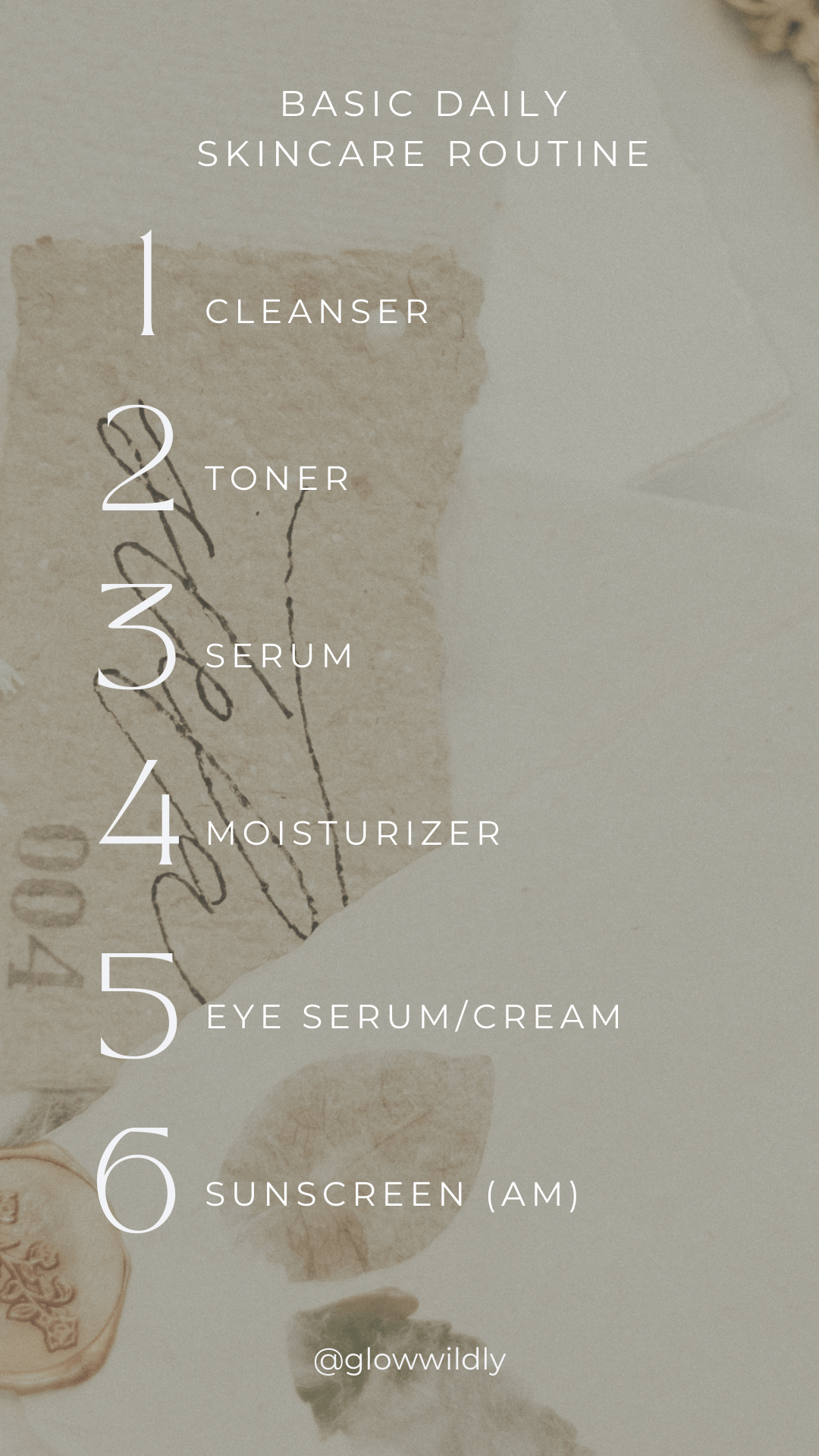
This post may contain affiliate links that support the creation of the content of this blog. If you use these links to buy something, I may earn a commission, at no additional cost to you. Thank you.

Winter is a beautiful season, but it can wreak havoc on your skin, leaving it dry, flaky, and uncomfortable. Cold air, low humidity, and indoor heating can strip your skin of its natural oils, leading to moisture loss and irritation. However, with the right skincare routine and products, you can keep your skin hydrated, supple, and glowing all winter long. In this guide, we'll explore how to care for dry skin during the winter months, focusing on both facial and body care.
Understanding Dry Skin
Dry skin, also known as xerosis, is a common skin condition characterized by a lack of moisture in the outermost layer of the skin. It can be caused by a variety of factors, including cold weather, low humidity, hot showers, harsh soaps, and aging. Dry skin is often accompanied by symptoms such as itching, redness, flaking, and tightness.

Facial Care for Dry Skin
Gentle Cleansing:
Start your skincare routine with a gentle, hydrating cleanser that won't strip your skin of its natural oils. Look for ingredients like hyaluronic acid, glycerin, and ceramides, which help to attract and retain moisture.
Exfoliation:
Exfoliating regularly can help to remove dead skin cells and promote cell turnover, allowing moisturizers to penetrate more deeply. However, avoid harsh exfoliants, as they can further dry out your skin and compromise its natural protective barrier. Opt for a gentle chemical exfoliant with enzymes or gentle acids like lactic and azaelic acids or a physical scrub with a creamy base and smooth, rounded exfoliating particles (jagged, rough particles can create micro-tears in skin, causing irritation).
Hydration:
After cleansing and exfoliating, apply a hydrating toner, then a serum or facial oil to replenish moisture and nourish your skin. Look for products containing hyaluronic acid, squalene, niacinamide, and vitamin E, which are known for their hydrating and soothing properties.
Moisturization:
The key to combating dry skin is to use a rich, emollient moisturizer that helps to lock in moisture and create a protective barrier on the skin. Choose a moisturizer with ingredients like shea butter, jojoba oil, or squalane, which are highly moisturizing and help to repair the skin's natural barrier.
Sun Protection:
Even in winter, it's important to protect your skin from the sun's harmful UV rays. Use a broad-spectrum sunscreen with an SPF of 30 or higher, and reapply every two hours when outdoors.
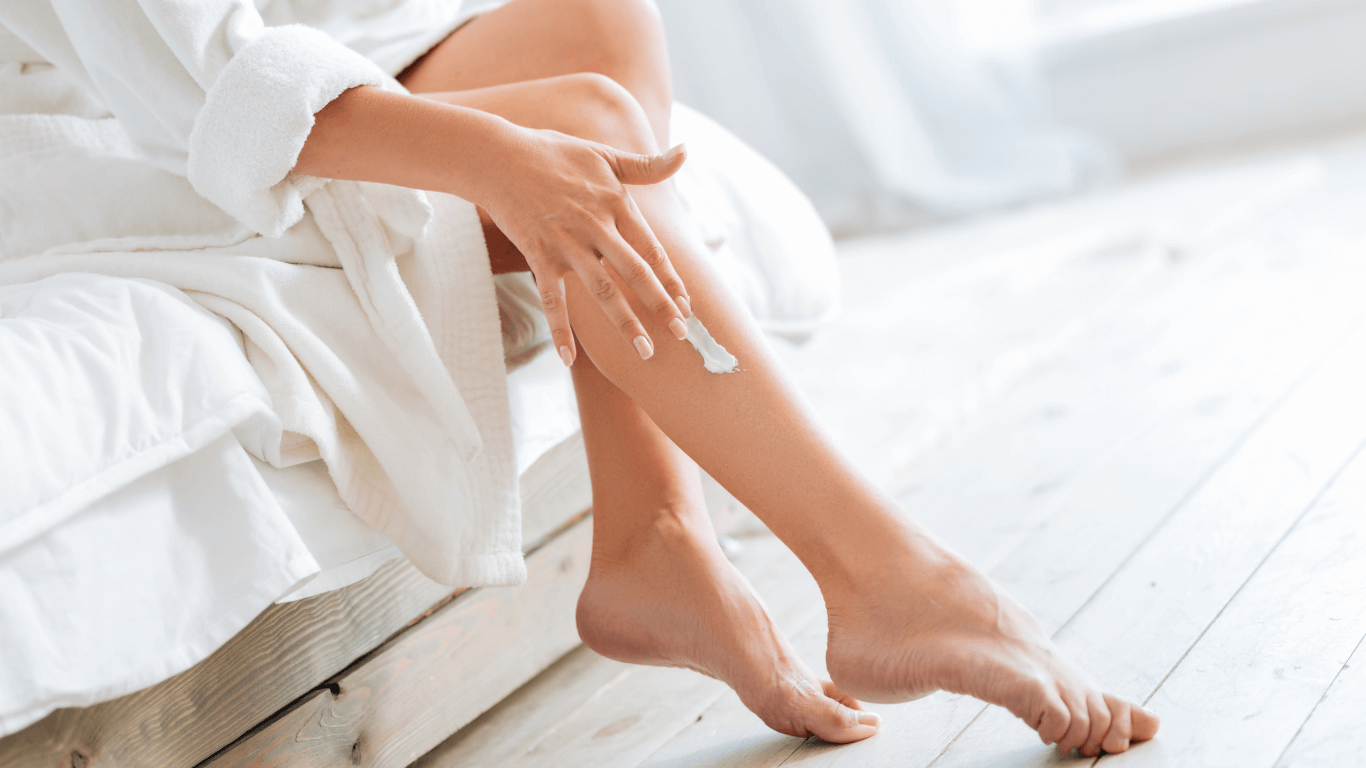
Body Care for Dry Skin
Hydrating Shower:
Avoid hot showers, as they can strip your skin of its natural oils. Instead, opt for warm water and a moisturizing body wash that helps to hydrate and nourish your skin.
Gentle Exfoliation:
Use a gentle body scrub once or twice a week to remove dead skin cells and improve the absorption of moisturizers. Avoid harsh scrubs, as they can further irritate dry skin.
Moisturizing Body Lotion:
After showering, apply a rich, creamy body lotion or body butter to damp skin to lock in moisture. Pay special attention to areas prone to dryness, such as elbows, knees, and heels. While it may be tempting to use a fragranced body product, fragrance can irritate skin, especially when it is dry and compromised. Opt for a fragrance-free product.
Layering Products
To maximize the benefits of your skincare products (for face and body), apply them from lightest to thickest consistency. Start with a serum or oil, followed by a richer moisturizer. You can even apply a few drops of facial oil to your fingertips and gently press it over your moisturizer for an additional layer of protection.
Additional Tips for Winter Skin Care
- Stay Hydrated: Drink plenty of water throughout the day to keep your skin hydrated from the inside out.
- Humidifier: Use a humidifier in your home - or even on your nightstand at night - to add moisture to the air and prevent dryness. I love this one.
- Protective Clothing: Wear hats, scarves, and gloves to protect your skin from cold winds and harsh weather.
- Avoid Irritants: Limit your exposure to harsh soaps, alcohol-based products, and fragrances, which can irritate dry skin.
Caring for dry skin in winter doesn't have to be complicated. By following a simple skincare routine that includes gentle cleansing, exfoliation, hydration, and moisturization, you can keep your skin healthy and hydrated all season long. Remember to layer your skincare products from lightest to thickest to seal in moisture and protect your skin from the elements. With the right care and attention, you can enjoy soft, supple skin throughout the winter months.
This post may contain affiliate links that support the creation of the content of this blog. If you use these links to buy something, I may earn a commission, at no additional cost to you. Thank you.
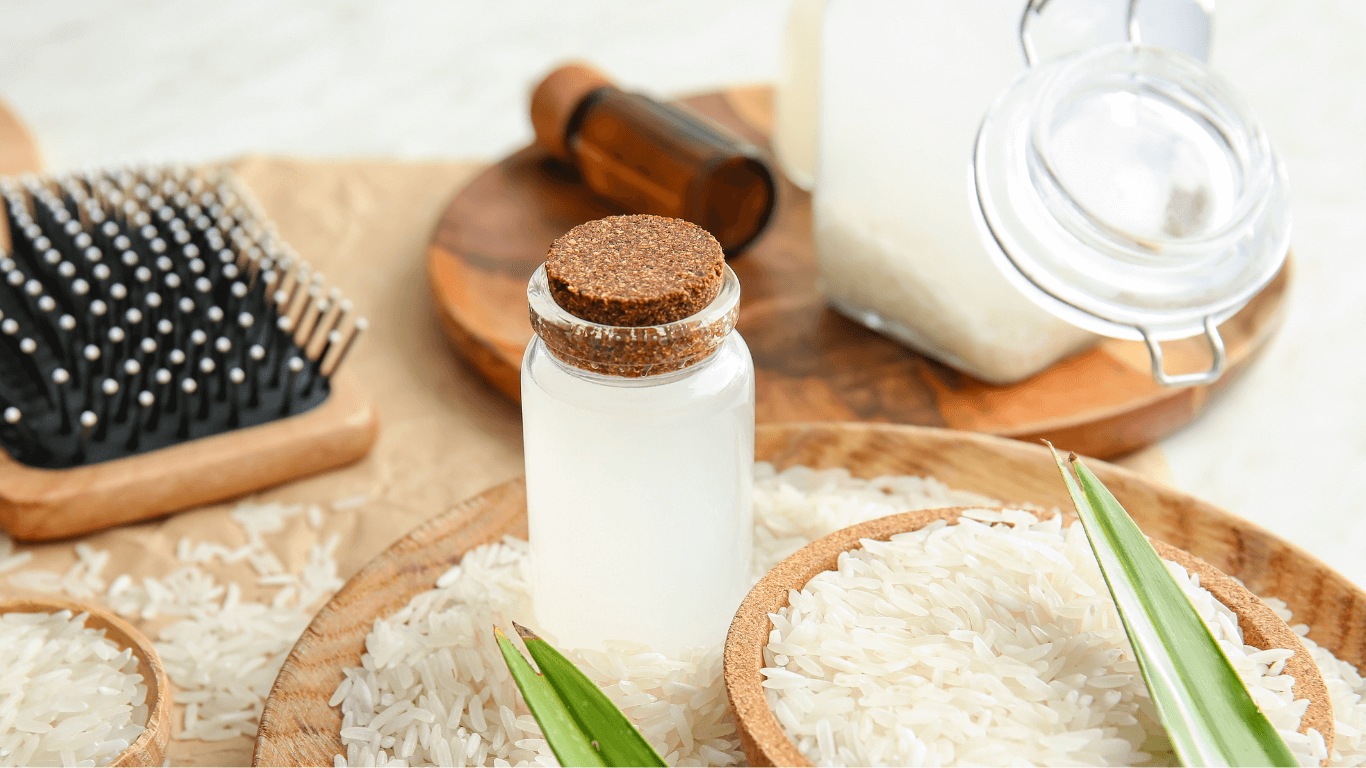
Rice water has been used in beauty rituals for centuries. This simple preparation is derived from soaking rice in water and holds the power to transform your hair and skin.
Why Rice Water for Hair and Skin?
Rice water is packed with vitamins, minerals, and antioxidants. These include vitamin E, minerals like magnesium and selenium, and amino acids – all of which contribute to healthier hair and skin. Rice water's skin-brightening properties can help even out skin tone and reduce dark spots. It also has anti-inflammatory properties that can calm irritated skin, making it suitable for sensitive skin types.
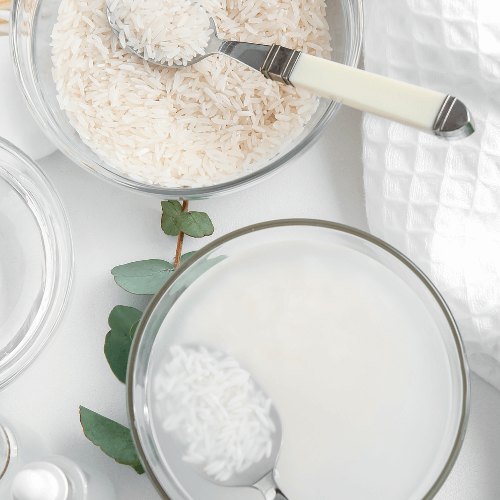 Making Rice Water: A Step-by-Step Guide
Making Rice Water: A Step-by-Step Guide1. Gather Your Ingredients
All you need to make rice water is dried rice and distilled water.. Opt for organic or whole-grain rice for maximum nutritional content.
2. Rinse the Rice
Begin by rinsing about 1/2 cup of rice thoroughly to remove any impurities. Use a very fine-mesh strainer for this process.
3. Soaking the Rice
Place the rinsed rice in a bowl and add 2-3 cups of distilled water. Allow it to soak for 15-30 minutes, depending on your preference. This soaking period allows the rice to release its beneficial nutrients into the water.
4. Straining the Rice Water
After soaking, strain the rice water into a clean spray bottle with a lid. It will look cloudy.
5. Fermentation (Optional):
For an extra boost, consider letting the rice water ferment at room temperature for 12 hours. Fermentation enhances the nutrient content and promotes the growth of beneficial bacteria.
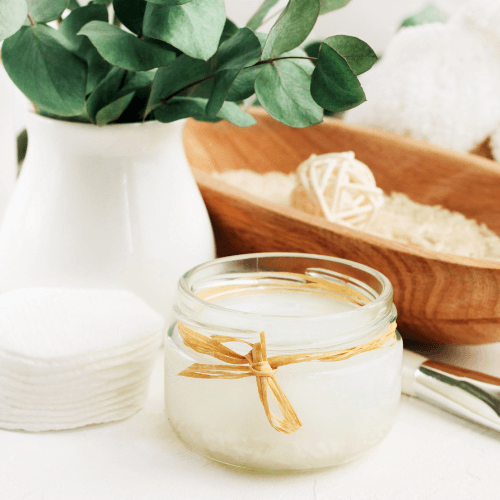
Precautions for Making and Using Rice Water
- Use distilled water to rinse and soak the rice to avoid impurities.
- Keep rice water refrigerated immediately after straining or after fermenting for 12 hours. Discard any unused rice water after 48 hours and make a new batch.
- For skin, mist face with rice water once daily or apply with a cotton round. You can rinse it off after 30-minutes or leave it on overnight for brightening skin.
- Before applying rice water to your skin, conduct a patch test to check for any adverse reactions.
This post may contain affiliate links that support the creation of the content of this blog. If you use these links to buy something, I may earn a commission, at no additional cost to you. Thank you.
 Hormonal shifts during menopause can lead to changes in skin texture, elasticity, breakouts (again?) and overall skin health. But, there are proactive steps you can take to ensure your skin remains radiant and healthy during this time of transition.
Hormonal shifts during menopause can lead to changes in skin texture, elasticity, breakouts (again?) and overall skin health. But, there are proactive steps you can take to ensure your skin remains radiant and healthy during this time of transition.
1. Stay Moist
Menopause and peri-menopause bring about hormonal changes, including a decrease in estrogen levels. One significant effect of this hormonal shift is a reduction in oil production by the skin's sebaceous glands. This decrease in oil can lead to dryness, a loss of elasticity, and hella increased sensitivity. To combat these effects, it's essential to adapt your skincare routine. Incorporate hydrating and nourishing products such as rich moisturizers and serums containing hyaluronic acid and squalene to help retain moisture.
2. Prioritize Sun Protection:
Sun protection is a non-negotiable step in any skincare routine, but it becomes even more crucial during menopause. Hormonal changes can make your skin more sensitive to UV damage, and prolonged sun exposure can lead to age spots and worsen existing skin concerns. Use a broad-spectrum sunscreen with at least SPF 30 daily, even on cloudy days. Don't forget to protect your neck, chest, and hands, as these areas often show sun damage more quickly.
3. Adopt a Gentle Cleansing Routine:
Menopausal skin may become more sensitive, so it's essential to use a gentle cleanser that won't strip your skin of its natural oils. Look for a mild, hydrating cleanser that can effectively remove dirt and makeup without causing irritation. Consider double cleansing if you wear makeup or sunscreen regularly to ensure your skin is thoroughly clean. Try using micellar water to remove makeup and a gentle cream or low-foaming cleanser to cleanse.
4. Include Antioxidants in Your Skincare:
Antioxidants play a vital role in combating free radicals, which can accelerate the aging process. Incorporate skincare products containing antioxidants like vitamin C, vitamin E, and green tea extract into your routine. These ingredients can help protect your skin from environmental damage and promote a healthy appearance.
5. Focus on Boosting Collagen
Peptides and retinaldehyde are powerful allies in supporting collagen production for menopausal skin. Peptides are amino acid compounds that can signal the skin to produce more collagen, helping to improve skin elasticity and firmness. Retinaldehyde, a gentle form of retinoid (Vitamin A), stimulates collagen synthesis and promotes skin renewal. Together, they work synergistically to combat the collagen loss associated with menopause, helping to reduce the appearance of fine lines and wrinkles, and restoring a more youthful complexion. Incorporating skincare products containing these ingredients can be an effective strategy to boost collagen production and maintain skin vitality.
6. Consult a Pro
If you're experiencing specific skin concerns during menopause, such as mild to moderate dryness, adult acne, or pigmentation issues, don't hesitate to consult a professional. Lean on me to help you to find the right skin care for your unique skin's needs, as well as suggestions for treatments to resurface skin, bring back vibrance, decrease hyperpigmentation and more.
For more chronic or severe concerns, as well as regular skin cancer checks, it is always a good idea to consult a dermatologist.
By following these skincare tips and being mindful of your skin's changing needs, you can embrace this phase of life with radiant, healthy, and beautiful skin. Remember, self-care and self-love are key elements in this journey, so cherish yourself and celebrate the skin you're in.
This post may contain affiliate links that support the creation of the content of this blog. If you use these links to buy something, I may earn a commission, at no additional cost to you. Thank you.
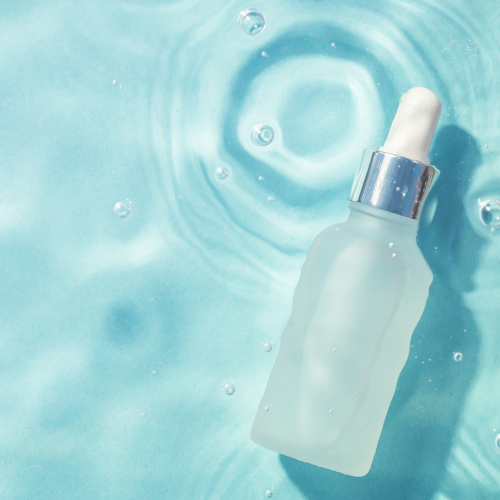
Trends come and go often in the skin care world. Sometimes they are worth the hype and sometimes they aren't. Since everyone's skin is unique, trends don't always translate the same to each individual. So, I'm always skeptical...
One of the latest trends making waves is "skin flooding." This technique promises a rejuvenated and radiant complexion. It is, essentially, a revisit of "skin layering" or "sandwiching," which involves layering products to allow the products closer to the skin to penetrate deeper into the epidermis - the top layers of the skin.
What is Skin Flooding?
Skin flooding, also known as "essence flooding," is a skincare technique that involves drenching the skin with a substantial amount of hydrating and nourishing essences or serums, usually containing hyaluronic acid (which is an ingredient that binds moisture into the skin) or other active ingredients. This technique is designed to saturate the skin, providing a deeply moisturizing and revitalizing effect. Unlike traditional skincare routines that involve applying a thin layer of product, skin flooding requires a more generous application to achieve optimal results.
The Process Unveiled
The process of skin flooding consists of several steps:
- Cleansing: Start by thoroughly cleansing your face to remove any impurities, makeup, and excess oils. A clean canvas ensures that the active ingredients penetrate effectively.
- Exfoliation (optional): Exfoliate gently if your skin is in need of some extra sloughing off of dead skin cells. This step can enhance the absorption of the subsequent products.
- Essence Application: This is the heart of skin flooding. Generously apply a hydrating essence or serum all over your face. The goal is to use a sufficient amount to deeply saturate the skin, allowing the ingredients to penetrate multiple layers.
- Layering: Consider layering multiple essences or serums with different beneficial ingredients. Each layer should be applied after the previous one has been absorbed.
- Moisturizer and Sunscreen: Seal in the goodness with a moisturizer to lock in the hydration and shield your skin from environmental stressors. If it's daytime, don't forget to apply sunscreen to protect your skin from UV rays.
Benefits of Skin Flooding
- Intense Hydration: The primary benefit of skin flooding is its ability to provide intense hydration. By flooding the skin with essences, you're replenishing moisture levels and promoting a plump, dewy complexion.
- Enhanced Absorption: With the increased amount of product used, the active ingredients have a higher chance of being absorbed deeply into the skin. This can lead to better results in addressing various skin concerns.
- Radiant Glow: Skin flooding can help improve skin texture and tone, resulting in a healthy and radiant glow.
- Customization: This technique allows for customization by using different essences or serums to target specific skin issues, such as dryness, dullness, or fine lines.
Cautions and Considerations
While skin flooding holds promising benefits, it's important to approach this trend with some considerations in mind:
- Product Compatibility: Layering multiple products can potentially lead to product interactions or sensitivities. Ensure that the products you're using are compatible and won't cause adverse reactions.
- Skin Sensitivity: Those with sensitive skin should exercise lots of caution and perform patch tests before fully adopting this technique, because it could have really negative results as far as irritation, redness or burning.
- Cost: Using a larger amount of product in each application might lead to products running out faster, potentially increasing your skincare expenses. This is true especially for serums, which usually contain more concentrated active ingredients, making them a bit more pricey.
As with any skincare trend, it's essential to consider your skin type, potential sensitivities, and budget before diving into the world of skin flooding. Consulting with a skincare professional can help you determine if this technique is suitable for your skin's unique needs.
So, is skin flooding worth the hype?
It could be a beneficial technique to try, maybe once or twice a week to get the benefits without risking irritation or going broke lol. Really, the key to a healthier skin appearance is consistency with using your home care products and a healthy lifestyle. More is not always more - keeping a regular routine with the right products for your unique skin is what gives results.
This post may contain affiliate links that support the creation of the content of this blog. If you use these links to buy something, I may earn a commission, at no additional cost to you. Thank you.



